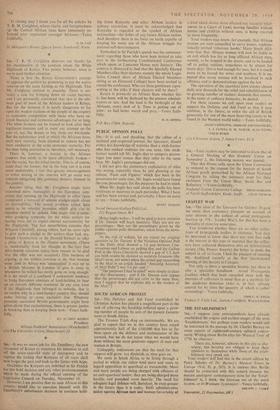PUBLIC OPINION POLLS
SIR,—It is sad, and shocking, that the editor of a national and respected journal, the Spectator, should evince less knowledge of statistics than a sixth-former who has studied statistics for one term. Our sixth- former would tell Mr. Inglis that to compare percen- tages you must 'ensure that they refer to the same base. Mr. Inglis's percentages did not.
I did not give the elementary explanation of what was .wrong, especially since by just glancing at our release, 'Facts and Figures,' which has been in his possession for some tiMe, Mr. Inglis would have found the true percentages, for the purposes he had in mind.
What Mr. Inglis has said about the polls has been irrelevant or incorrect in each particular. What 1 have said has been correct and, personally, I have no more to say.—Yours faithfully, 211 Regent Street, W I
[Brian Inglis writes : 'I will he glad to learn statistics if Dr. Durant will learn manners. They arc not my percentages: they arc the percentages given by the public opinion polls themselves, taken from the news- papers.
'At the risk of tedium, let me repeat my original question to Dr. Durant. If the National Opinion Poll in the Daily Mail showed a 3.6 gap between Con- servatives and Labour on polling day, and the Gallup Poll in the News Chronicle showed a gap of 1.5, how can both results be claimed as accurate forecasts (the Mail's term, not mine) when the actual gap (according to the Mail in an article beaded "Amazing Accuracy of Mail Polls") was 5.4 per cent.?
' "The purposes I had in mind" were simply to clear up this discrepancy : and if Dr. Durant now argues that the percentages did not refer to the same base, may I suggest that he explains this to the readers of the Mail?']






































































 Previous page
Previous page